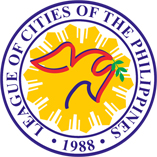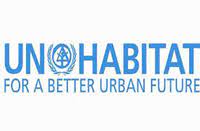Liveable cities
The Philippines has had a spotty record of urban planning. What started out as beautifully master-planned cities generations ago have ended up as cities characterized by congestion and traffic, little or poor access to mass transit, few open spaces, parks and public spaces, and many blighted and derelict sections. And yet we’ve also seen some areas beautifully planned and built out in different parts of the country. Whether by design or accident, the parts that have become “liveable” are thriving, booming and driving growth.
Cities are drivers of economic growth and innovation. They are hubs of consumption, resource use and waste. They are also generators of wealth, production and development. The world has been on an urbanization trend for some time now. Over 80 percent of global GDP is generated in cities; 70 percent of greenhouse gas emissions come from cities as well. Over one-half of the people in the world live in cities. And over 30 percent of global city residents live in slums; 75 percent of the global urban population live in a developing country.
For the Philippines, one of the keys to building our national competitiveness is to build city competitiveness. With a population of 105 million people scattered across an archipelago, we need to build liveable cities beyond our three traditional major metropolitan areas of Manila, Cebu and Davao. We need to build 40 to 50 liveable cities.
There are many elements of “liveability,” but in meetings and surveys with mayors, we’ve narrowed down some initial elements to four basic characteristics: Connectivity/Mobility; Resilience; GovTech; and Basic Services.
Connectivity/Mobility would refer to the ability to digitally connect and to move people, goods and services within a city and across cities and the country. Without this, commerce and trade would not be able to grow. This would also include mass transit and other forms of mobility such as pedestrianization, bike-ability and PWD access.
Resilience would refer to a city’s ability to manage itself, prepare and recover in the face of natural calamities, manmade disasters and accidents. Given that we live in a climate-defined future, this will continue to be a major concern for Philippine cities.
GovTech would refer to the digitization of municipal services from both the frontline services and city management points of view. Because most municipal permits (e.g., mayor’s permit, construction permits, occupancy permits, etc.) are still manually applied for and issued, an obvious area of improvement for cities would be to digitize and make these licenses and permits available online, preferably over a smartphone. Moreover, a movement toward “intelligent cities” should lead to improvement in the delivery of services and management of a city.
Finally, Basic Services would refer to such items as power, water, sewerage, telecommunications and other utilities and basic services without which a city could not be considered liveable.
For these reasons, we have established the Liveable Cities Challenge project, to work with city mayors, administrators and planners as well as the private sector to focus on these elements to make cities more sustainable, resilient and competitive. The project will organize Liveable Cities labs, an annual summit, online academy, city dashboards, as well as design, finance and implementation challenges for Philippine cities.
Building liveable cities will bring a number of benefits for cities and the country. The presence of sustainable, resilient and competitive cities creates more potential investment destinations in the country. This, in turn, generates new job opportunities and creates wealth in cities, providing the potential to grow the middle class and to spur more inclusive growth. At the end of the day, it distributes opportunity for growth across the country and provides investors with more options than we currently
Guillermo M. Luz (luz.gm@ayala.com.ph) is an associate director at Ayala Corp. and served as cochair of the National Competitiveness Council from 2011 to 2018. @inquirerdotnet











